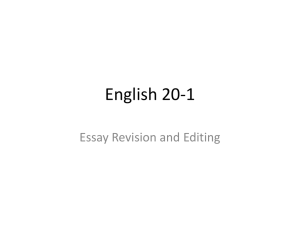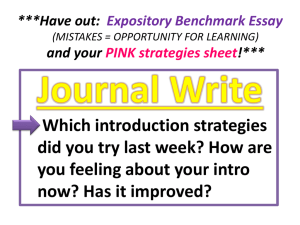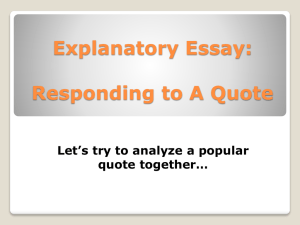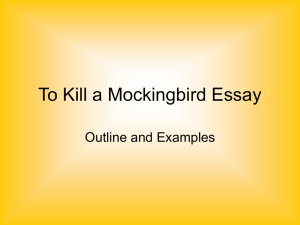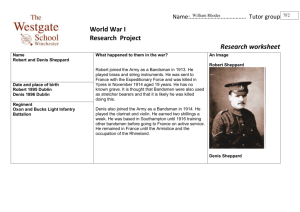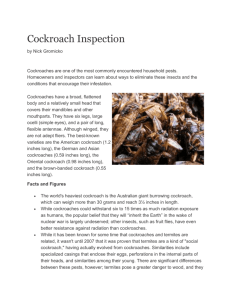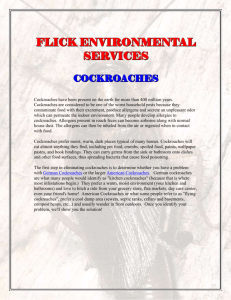Embedding Quotes
advertisement
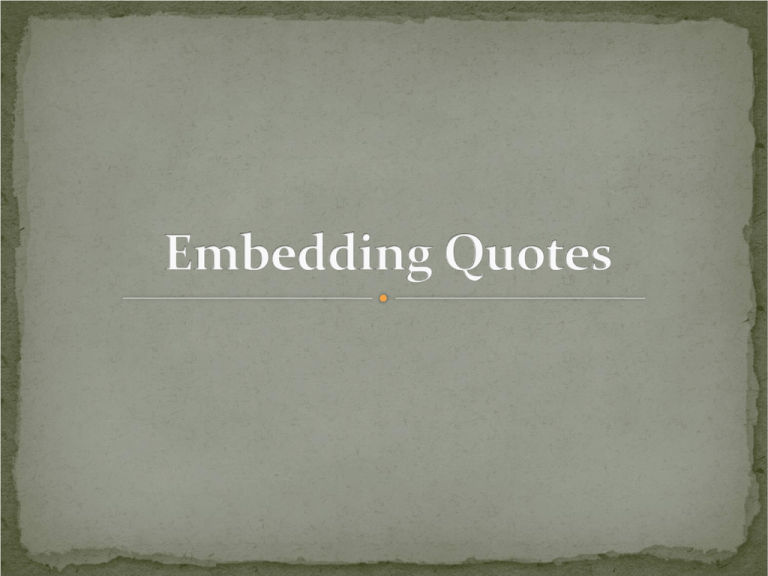
To embed or integrate a quote means to blend it into an original sentence. There are different levels of blending quotes. : the writer introduces the quote with a simplistic sentence starter, such as “The author explains that,” followed by a quote. We want you to try for the proficient or advanced level, not basic. : the writer introduces the quote and provides a context for it. Example: In the second stanza, he appeals diplomatically to the landlord’s self-interest: “These steps is broken down. / When you come up yourself / It’s a wonder you don’t fall down” (6-8). : the writer sandwiches the quote inside the analysis. Example: Although the reader might suspect that the cockroaches didn’t actually come out to see “what was up,” Steinbeck’s wording nevertheless proves his point. In the second stanza, he appeals diplomatically to the landlord’s self-interest: “These steps is broken down. / When you come up yourself / It’s a wonder you don’t fall down” (6-8). Margaret Peel, “Opposing Voices in ‘Ballad of the Landlord’” Early in the story, Mrs. Hale sympathizes with Minnie and objects to the way the male investigators are “snoopin’ round and criticizin’” her kitchen (200). In contrast, Mrs. Peters shows respect for the law, saying that the men are doing “no more than their duty” (201). By the end of the story, however, Mrs. Peters has joined Mrs. Hale in a conspiracy of silence, lied to the men, and committed a crime—hiding key evidence. What causes this dramatic change? Dan Larson, “The Transformation of Mrs. Peters: An Analysis of ‘A Jury of Her Peers’” Appealing to readers’ emotions, Goodall hopes to persuade readers that the chimp is “sociable” and “sentient,” or feeling (62). According to Goodall’s logic, if researchers are careful to avoid tests that cause human suffering, they should also be careful to avoid tests that cause suffering for other life forms. Carmen Lopez, “‘A Question of Ethics’ Left Unanswered” We have all heard horror stories about distracted drivers chatting on their cell phones. For example, in a letter to the editor, Anthony Ambrose describes being passed by another driver “who was holding a Styrofoam cup and a cigarette in one hand, and a cellular telephone in the other, and who had what appeared to be a newspaper balanced on the steering wheel—all at approximately 70 miles per hour” (128). Paul Levi, “Cell Phones in the Hands of Drivers: A Risk or a Benefit?” In an important article, John Cimprich and Robert C. Mainfort Jr. argue that the most trustworthy evidence is that written within about ten days of the battle, before word of the congressional hearings circulated and Southerners realized the extent of Northern outrage. The article reprints a group of letters and newspaper sources written before April 22 and thus “untainted by the political overtones the controversy later assumed.” Ned Bishop, “The Massacre at Fort Pillow: Holding Nathan Bedford Forrest Accountable” Steinbeck uses literary devices such as hyperbole and personification to help the reader understand the lives of characters mentioned in his story. For example, when the crew entered the cantina, the people there looked so pathetic, miserable and pitiful that “even the cockroaches in their hordes rushed in to see what was up” (56). These words help the reader picture the environment of the cantina as so pitifully boring that, according to the author, even the cockroaches took an interest in the newcomers. Although the reader might suspect that the cockroaches didn’t actually come out to see “what was up,” Steinbeck’s wording nevertheless proves his point. Using hyperbole to make his point and personification to bring the scene to life helps the reader envision the situation. Jen Hunt, C.V.U.H.S.D. Transition words + the situation/context + pronoun/noun + verb + quote Example: For example, when Sheppard finally rids himself of Rufus, he realizes “he [has] ignored his own child to feed his vision of himself” (481). Transition words: For example The situation: when Sheppard finally rids himself of Rufus Pronoun: he Verb: realizes Quote: “he [has] ignored his own child to feed his vision of himself” (481). Example: For example, when the crew entered the cantina, the people there looked so pathetic, miserable and pitiful that “even the cockroaches in their hordes rushed in to see what was up” (56). Transition words: For example The situation: when the crew entered the cantina Pronoun: the people there Verb: looked Additional context: so pathetic, miserable and pitiful that Quote: “even the cockroaches in their hordes rushed in to see what was up” (56). What evidence (quote) from the story would BEST support your mini-rationale? Example Conflict Sentence: Sheppard discovers his principles are insufficient and cause harm to his son Norton. Example Embedded Evidence (Quotes): For example, when Sheppard finally rids himself of Rufus, he realizes “he [has] ignored his own child to feed his vision of himself” (481). Secondly, during Sheppard’s reformation, “he saw the clear-eyed devil, the sounder of hearts, leering at him from the eyes of Johnson”(481).


